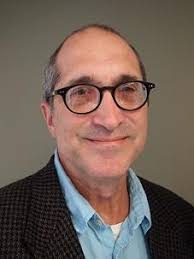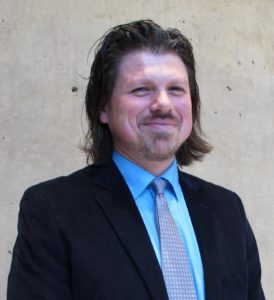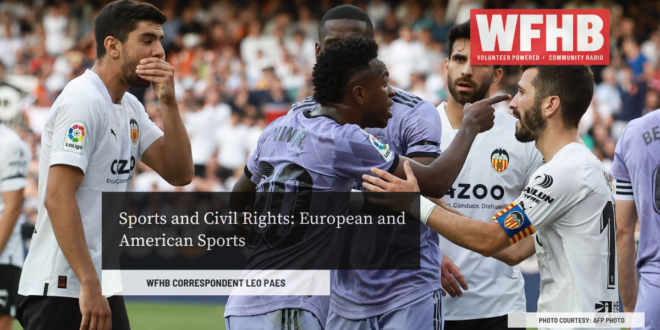Podcast: Play in new window | Download (Duration: 19:21 — 26.6MB)
Subscribe: RSS
In the past few years, racist incidents have been on the rise in professional leagues around the world, the most recent case involving Real Madrid player Vinicius Junior in Spanish soccer. Vinicius has been attacked by fans, players, and even the La Liga commissioner. When the commissioner of one of the biggest soccer leagues in the world gets defensive about racial injuries toward one of his players, we naturally ask ourselves: how racist is the world of sports?
To answer this question, we have to look at some of the biggest sports leagues in Europe and the US. In 2022, Arne Koch, an Associate Professor in the Department of German and Russian at Colby College in Waterville, Maine, wrote a scientific paper called “The paradoxical reality of Racism: German Soccer and the Irreversibility of Multiculturalism.” In the article, he talked about cases of racist offenses against foreign players in the German league and the difference in treatment between ‘traditional’ Germans and ‘non-traditional’ Germans.
According to Dr. Koch, German multicultural exposure started to be seen in the German National Team in the 1970s, but it was only after the unification of Germany in 1989 that the number of players with different backgrounds really increased. However, the reception of these players by German fans was skeptical and suspicious, as Koch explains.

“The acceptance of them was more significant in the 2000s […] as longs as they met the definition of what a good German player would do,” said Dr. Koch.
This suspicion can be seen in the case of Bakery Jatta, a Gambian refugee and Hamburg SV player who was accused by the German media of falsifying his identity to enter Germany in 2015, a year before he signed with Hamburg. As Koch shows, despite having no proof to support their claim, the German media still attacked Jatta, who had to prove his innocence in court.
“There’s still that suspicion of him […] stuck with Jatta for a long time,” said Dr. Koch.
What’s more important is that it’s not just the professional leagues that have these problems. Youth and developmental leagues are, oftentimes, structured in an oppressive way because of systemic racism, as Dr. Koch demonstrates.
“There is systemic racism […] makes you train harder,” said Dr. Koch.
And systemic racism is not exclusive to Germany. Dr. Chris Lamb, a Professor and Chair of the Journalism and Public Relations department at IUPUI, explains that the most common form of racism in American sports is systemic racism.

“I think the most common form of racism is probably the most powerful […] coaches of teams and things like that,” said Dr. Lamb.
With a fundamental problem on their hands, the major leagues implement changes that often serve just as facades, which is the case of the Rooney Rule. As the NFL website explains, the Rooney Rule was created in 2003 to help increase the number of minority hires for Head Coach positions in the NFL by requiring every team with a head coaching vacancy to interview at least one or more diverse candidates before making a new hire, but the rule did not make the impact expected. For Dr. Lamb, players need to push harder for change so league executives feel forced to actually change.
“The Rooney rule, which the NFL created […] until something happens that changes that,” said Dr. Lamb
Dr. Lamb explains that change is gradual but players need to push for them nonetheless. The most prominent case of change regarding race is the case of Jackie Robinson, the first black player to play in Major League Baseball. In 1947, he was called up by the then-Brooklyn Dodgers and was received with a hostile reception, including players and coaches calling him slurs, threatening to strike, and using excessive force against him. As Dr. Lamb explains, players need to understand their power and use it for good.
“It’s going to take something drastic […] I don’t think players realize how much power they have,” said Dr. Lamb.
However, players need to be careful with hollow gestures of protest and need to follow through with their intentions. As Dr. Galen Clavio, a Professor and Director of Undergraduate Studies for the Media School at IU, explains, kneeling but not doing anything else afterward can have the opposite effect expected by players.

“A lot of the questions surrounding demonstrations […] when they do those sorts of things,” said Dr. Clavio
In his article, Dr. Koch talked about the case of Jordan Torunarigha, a German player of Nigerian descent that was the target of animal noises and verbal insults from Schalke 04 fans. Besides the insults from the stands, Schalke officials downplayed the incident after the game. On top of that, during the post-game interview, Schalke’s coach David Wagner said he was in favor of stopping play in case of racist offenses, as FIFA Guidelines demand, but only if both clubs, all officials, and referees were aware of the racist abuse when it happened. As Dr. Koch explains, players need to feel supported by organizations and people have to be held accountable.
“No, nothing happened there […] it’ll take an awful lot longer,” said Dr. Koch
But it is not only up to players to push for changes, the media is also very influential and can help players off the pitch. As Dr. Clavio explains, the media has to expose people to these problems and help them understand the players’ perspective so they can support the players’ actions.
“Media-wise […] why they should feel in a way that is essentially supportive,” said Dr. Clavio.
When talking about the media, the Internet cannot be excluded, and, unfortunately, the Internet is not always a very welcoming place. As Dr. Clavio explains, the Internet is a direct way of communicating with the public, but this is not always a good thing.
“Social media originally […] there’s not going to be any consequences for them saying those things, in most cases,” Dr. Clavio said.
Dr. Lamb also agrees that the internet has divided people and made them feel like they are not responsible for what they write, and that brings out the worst in people.
“I think it’s made us all more racist […] but it certainly has polarized us,” Dr. Lamb said.
For better or worse, the First Amendment prevents the government from banning any kind of speech on social media, but that doesn’t mean that hateful speech will be tolerated by its users. Since the platforms cannot possibly have enough moderators to overlook user activity, it is up to the user to decide if they want to be on that platform or not, as Dr. Clavio explains.
“There’s no way to really restrict those sorts of comments at scale […] at least not in the near future,” Dr. Clavio said.
Race and discrimination are complicated topics to deal with, but that doesn’t mean that changing for the better is impossible. As Dr. Lamb remarks, we have to talk about it so people feel inspired to change, and then change will come.
“Sports is powerful […] we need to look a lot more at sports,” Dr. Lamb said.
 WFHB Bloomington Community Radio
WFHB Bloomington Community Radio


